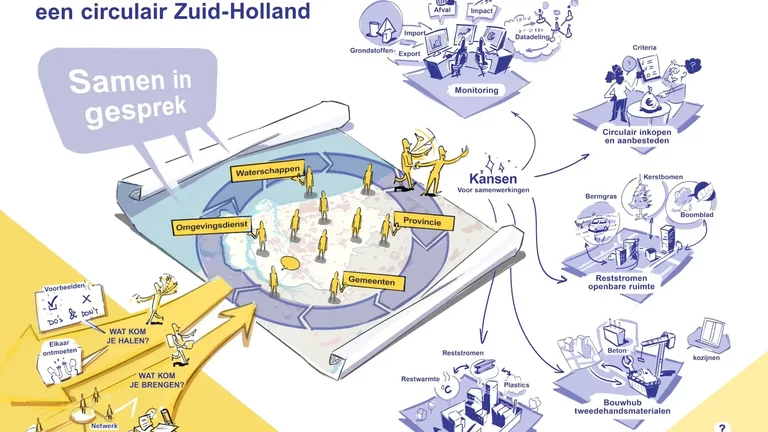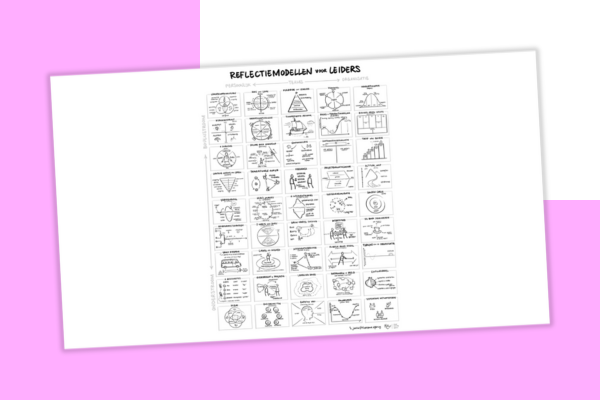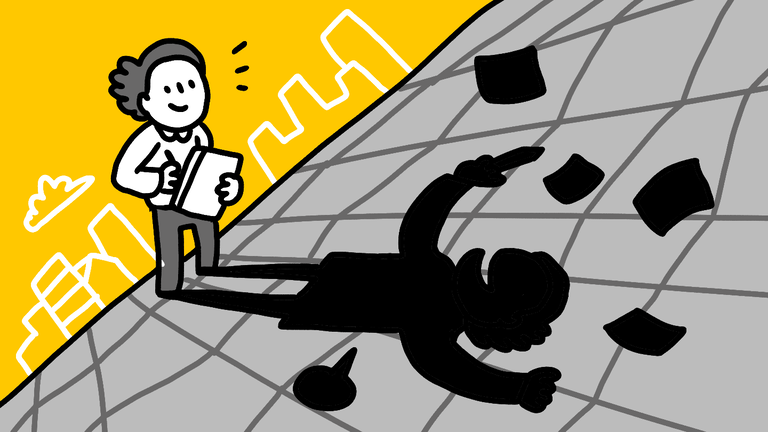How Visual Design Thinking helps with an Agile implementation
You’ve done your research, hired agile coaches and started looking in the kitchen at similar companies. Your team is well-informed about all the possibilities…
But now they need to select the most relevant ways of working and build an appropriate model. Spotify or Netflix are often taken as a starting point, but shouldn’t your ways of working be tailored to your industry, culture and team?

A difficult task
We have found Visual Design Thinking (VDT) to be a valuable tool to get you started. VDT is a combination of visualisation and design methodologies. By using VDT during an agile transition, teams get a better grip on research findings and can more easily build their initial models. One of the core principles of VDT is to start by doing, start designing, repeat and discard previous concepts to repeat further. In this way, even the most difficult tasks become manageable.
Having been part of several agile transitions, we walk through a number of steps that can help your organisation:
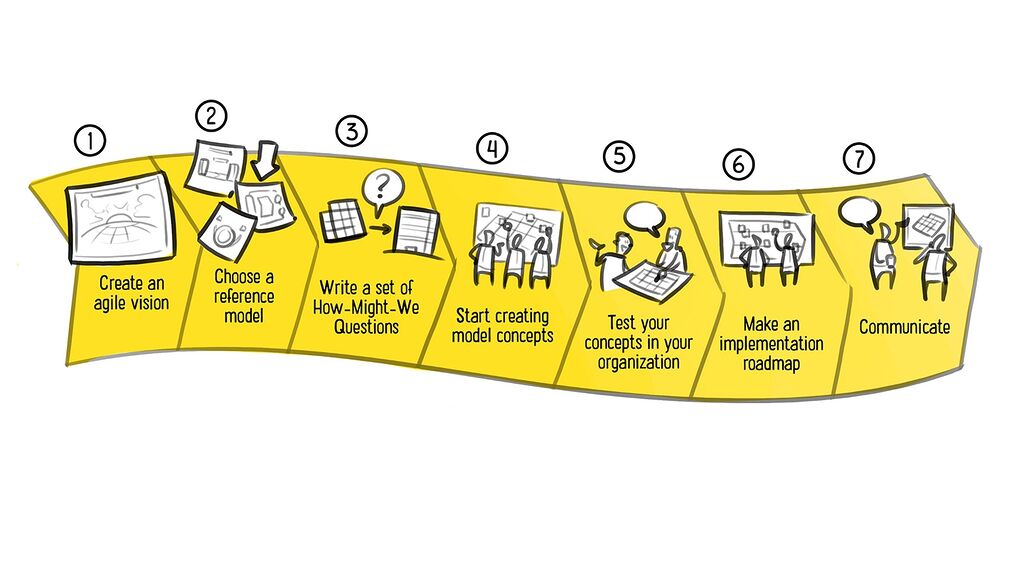
1. Start with your own agile vision
There are probably several reasons why you started the transition. Visualising them with your team and combining them into a story you share together builds motivation and gives direction. Perhaps you started the transition to prepare for faster-changing consumer needs and faster market response. Or maybe for faster acceptance of new technology, team motivation, ownership and accountability.
These general reasons are not necessarily wrong, but try to give them a unique twist. Why are they important to you? In a session with your team, using metaphors and stories, you can create one visual that the whole team supports. A visual you can always refer to when you need to remember the purpose of the transition.
2. Choose a reference model
There are several agile models available(LeSS, SAFe, Spotify, Nexus, etc). Each with their own terminology. Based on your research and vision, choose the model that best suits your company. This is the model you will redesign. (Make this an important choice to avoid confusion in terminology).
3. Write a series of How-Might-We (HMW) questions
HMW or How-Can-We questions help translate research insights into challenges. Because you are redesigning an existing agile model, you can go a step deeper than the general benefits of agile. Think of: “How can we use this method of the Spotify model, with this limitation of our company?” For example, if you want to create multidisciplinary teams, but there are not enough lawyers to represent legal in each team, an HMW question could be: “How can we represent legal in our multidisciplinary teams?” Other HMW questions might relate to which teams work agile and which do not, resource allocation, KPIs, staff allocation, etc.
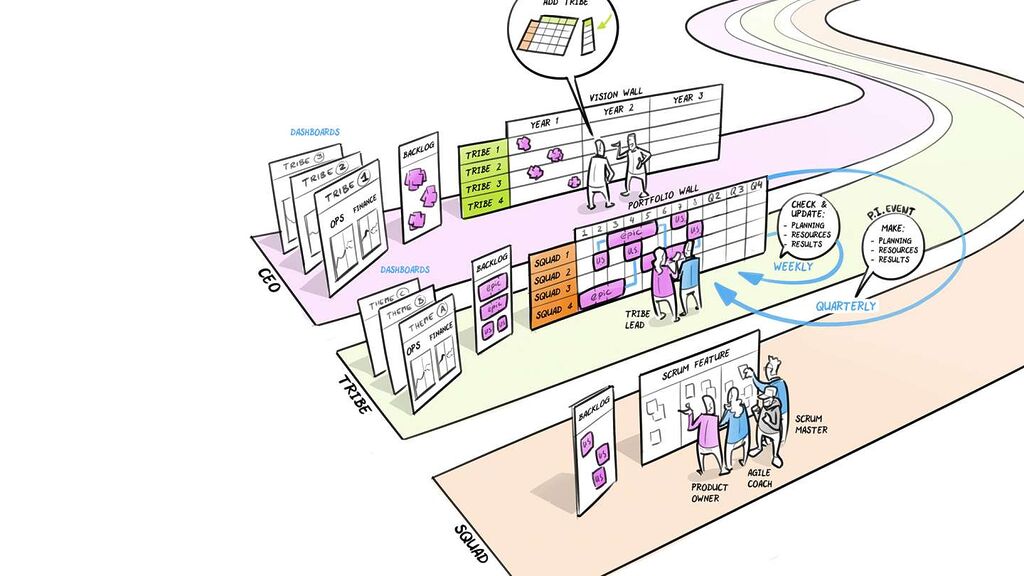
4. Create model concepts
Take the core concept of a model (using a template like the agile matrix below) and start generating ideas with your HMW questions. Don’t be afraid to try out models, these are concepts and they are just meant to be repeated. Nothing is final yet. Do this in small groups (with a maximum of 4 people) to keep discussions short and to the point. Also try filling in tribes, chapters and squadrons to get an idea of possible formations. Make visual maps of your model, but try not to include every design detail in one map. Instead, try to find a hierarchy. For example: organisation, processes and roles.
5. Test the concepts in your organisation
An agile model (or any new organisational model) is often created by a small team and then rolled out within the organisation. Why not make employees an integral part of the design process? Then you end up with more support and a better fitting design.
If you do, there is a specific way to approach it: organise agile model testing sessions and frame them as such in communication with your test group. After all, you are testing concepts, not a final design. Write down specific questions for specific user groups and never put a model in front of them and ask “yes, what do you think?”. For example, if you are testing whether your model elicits more constructive behaviour from a legal team member, ask, “What would you do if faced with a risky design decision in the early stages of a sprint?” You are testing specific HMW design goals.

6. Create an implementation roadmap
Now that you have a vision and a customised organisational model, you can work on a timeline for implementation. It may help to identify some themes to structure the roadmap. This map should be a tool that the transition team can update from time to time. It can also be used to explain to your organisation how you are progressing and what is planned. Actions on the map can be about pilots, communication, events, training, etc.
7. Communicate
People must have many different doubts and concerns about the transition, for example, “Am I not going to work with people from my field anymore?” “What if I fail with these new responsibilities?” or “Will I still have a job?”. By explaining not only the bigger picture, but also what the transition means specifically for everyone, most of these concerns can be addressed. Communicate constantly throughout the transition using your visual roadmap and visual models. Communicate both in meetings and simply at the coffee machine. Find ambassadors (from user testing, for example) to help spread your story.
 Agile working and Visual Design Thinking have a lot in common. With a diverse team of experts, you work towards prototypes in short iterations. Why not use those shared principles for your transition?
Agile working and Visual Design Thinking have a lot in common. With a diverse team of experts, you work towards prototypes in short iterations. Why not use those shared principles for your transition?Managing Partner

